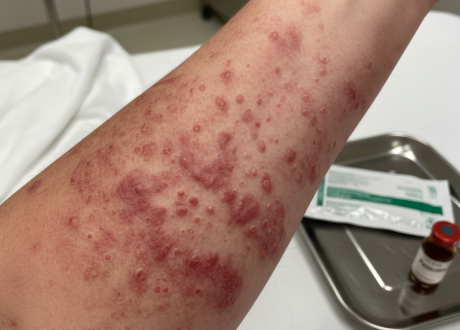http://orcid.org/0000-0003-1625-2205Ashley Matthies1,2, http://orcid.org/0000-0002-7631-8061Michael Trauer2,3, http://orcid.org/0000-0003-2883-9185Karl Chopra1,2, http://orcid.org/0000-0003-4557-9274Robert David Jarman4

Correspondence to Dr Ashley Matthies, Emergency Department, Homerton University Hospital NHS Foundation Trust, London, London, UK; ashley.matthies@nhs.net
Abstract
Background Point-of-care (POC) lung ultrasound (LUS) is widely used in the emergency setting and there is an established evidence base across a range of respiratory diseases, including previous viral epidemics. The necessity for rapid testing combined with the limitations of other diagnostic tests has led to the proposal of various potential roles for LUS during the COVID-19 pandemic. This systematic review and meta-analysis focused specifically on the diagnostic accuracy of LUS in adult patients presenting with suspected COVID-19 infection.
Methods Traditional and grey-literature searches were performed on 1 June 2021. Two authors independently carried out the searches, selected studies and completed the Quality Assessment Tool for Diagnostic Test Accuracy Studies (QUADAS-2). Meta-analysis was carried out using established open-source packages in R. We report overall sensitivity, specificity, positive and negative predictive values, and the hierarchical summary receiver operating characteristic curve for LUS. Heterogeneity was determined using the I2 statistic.
Results Twenty studies were included, published between October 2020 and April 2021, providing data from a total of 4314 patients. The prevalence and admission rates were generally high across all studies. Overall, LUS was found to be 87.2% sensitive (95% CI 83.6 to 90.2) and 69.5% specific (95% CI 62.2 to 72.5) and demonstrated overall positive and negative likelihood ratios of 3.0 (95% CI 2.3 to 4.1) and 0.16 (95% CI 0.12 to 0.22), respectively. Separate analyses for each reference standard revealed similar sensitivities and specificities for LUS. Heterogeneity was found to be high across the studies. Overall, the quality of studies was low with a high risk of selection bias due to convenience sampling. There were also applicability concerns because all studies were undertaken during a period of high prevalence.
Conclusion During a period of high prevalence, LUS had a sensitivity of 87% for the diagnosis of COVID-19 infection. However, more research is required to confirm these results in more generalisable populations, including those less likely to be admitted to hospital.
PROSPERO registration number CRD42021250464








